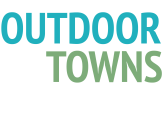STEP ONE
Organize An Action Team
The first step to being an Outdoor Town is to organize members of the local community into an Action Team. The Action Team is composed of a small core group of people passionate about making your community more attractive and accommodating for outdoor recreation. The Action Team can be a sub-group of an existing organization, or a new group. Read more.
Tools for organizing an action team:
Forming Your Heart & Soul Team
Essential Ingredients of a Great Outdoor Town
Asset Identification Form
Community Leader List
STEP TWO
Identify Partners and Resources
Identifying partners and resources that can help you will make your journey easier. Planning is a central component to any Outdoor Town initiative. Many grant programs give preference to projects that have been developed through a public planning process. Begin with a review any existing plans that may have laid the groundwork for your efforts, you may find part of the work has already been done. Use the Planning Inventory Form to keep track of plans that are relevant to your work. Read more.
Tools for Identifying partners and resources:
STEP THREE
Assess Your Community and Create a Vision for the Future
Community members stand to benefit the most from your efforts, so gathering their input and gaining their support is key to success. Demonstrating local support is also vital to securing funding for your projects. Read more.
Tools for assessing your community:
Community Input Meeting in a Box:
Invitation – flyer, email, web posts
Input Meeting Leader’s Guide
Sign In Sheet
Input Meeting Agenda
Input Survey to be completed by each participant
Community Input Summary Report Form
Creating an Outdoor Vision
STEP FOUR
Set Priorities and Create an Action Plan
Report back to your community about the input you have gathered and build consensus for choosing priority improvements. Read more.
Tools for Setting Priorities and Creating an Action Plan:
Community Action Meeting in a Box:
Invitation – flyer, email, web posts
Action Meeting Leader’s Guide
Sign In Sheet
Action Meeting Agenda
Volunteer Application Form
Action Plan Template
Municipal Resolution
STEP FIVE
Implement Your Action Plan
Project by project, work on implementing your plan. Continue to hold regular meetings of your Action Team to work through tasks and issues. It’s a good idea to continue to bring new members onto the team to help spread the work load. New members and may also bring additional expertise or replace members that may leave the team. Read more.
Tools for Implementing your Action Plan:
Municipal Resolution to adopt and support Vision and Action Plan
Project Budget Form
Funding Resources:
Finding the Green, A Guide to State Funding Opportunities for Conservation, Recreation, and Preservation Projects
Mapping Resources:
GoToTrails.com Online Trail Planning and Mapping
Implementation Ideas:
Lighter, Quicker, Cheaper Transformation of Public Spaces
STEP SIX
Celebrate Success!
Not just at the end of a project, but all the way along. This builds awareness for what you have achieved and support to take on the next project!
A great way to celebrate success is to have an event that uses your outdoor recreational assets. Recognize volunteers and partners that have helped you to achieve success. Click here to find examples of community events you can do in your town.
STEP SEVEN
Track Results, Regroup and Set Your Next Priorities
Keeping track of what you have accomplished, and what hasn’t worked so well, informs how you work in the future.
Reporting your accomplishments in a simple annual report allows you to share results with stakeholders,
recognize their involvements, keep them involved, and expand your base of support.
The Adaptive Management Cycle from CSIRO Marine and Atmospheric Research is a
good model for illustrating the cyclical nature of asset-based community development. It’s a cyclical process of planning, implementing, evaluating and learning, and adjusting.
Each year evaluate what has been accomplished and what you have learned by doing your work. Adjust your plans, do more planning as needed, and keep doing the projects that will make your town a great Outdoor Town!
Contact Us
Learn more about this Toolkit and how it lays out a pathway to get you started on your journey to becoming an Outdoor Town (OT).



